This article morphed into a “how and why” of all things Steelhead Safe Design
Since a modular safe is such a unique answer to the question “Which Safe is Right for me?”, we had a hard time writing this article without taking a pretty in-depth dive into our design rationale behind most of the key features of our safes.
Is there a standard rating in the industry?
When it comes to safes, it is often a balancing act between important characteristics. There is only one universally recognized fire testing procedure for safes, UL 72. There are many UL 72 rated fire safes on the market, but not any readily available gun safes. Because of this, gun safe manufacturers are left to write their own test procedure and test internally or have an outside laboratory test to their test procedure. Because of this variability, nearly every manufacturer has a different rating system, and different test methods. There is often no way to compare apples to apples, and these manufacturer supplied ratings should be treated as guidelines. Because of this variability, customers are left with no way to compare apples to apples. Given all of this variability, we have chosen to provide our design rationale and test data, rather than giving our safes an official “fire rating”.
First, a little bit about traditional fire insulation systems:
There are two major insulators used in fire safes, gypsum board and concrete mixtures. Both of these insulators work by way of trapped moisture. During a fire the moisture that is trapped during the manufacturing process is boiled off while the temperature stalls at the boiling temperature of water. Because a phase change is happening the latent heat of vaporization is helping maintain the temperature (remember your chemistry class?) This phase change phenomenon works wonders keeping temperatures low during heat input, but it does not come without drawbacks.
Old school, real deal bank vault level safes:
The ideal safe construction, if cost, weight and mobility are not a concern, is a double wall safe with an airtight inner shell, a poured concrete liner and an additional outer shell. This allows the significant phase change energy to be harnessed without the potential for any moisture to be displaced into the safe. The inner liner keeps the contents dry while the trapped moisture in the concrete liner is boiled out of the safe through the outer shell and to the atmosphere. There are many safes on the market built this way, and if you can manage the cost, size and logistics of moving them, they are undoubtedly the best bet.
The most common compromise:
Since buying a safe is an exercise in weighing the costs and benefits, many people make the decision that the top tier protection offered from these safes isn’t worth the significant cost investment or the significant weight. This led manufacturers to find ways to maximize performance at lower price points. By far the most popular gun safe construction method is to weld an outer shell, line the shell with one or more layers of gypsum board (drywall), then glue carpeting to the gypsum board. This construction decreases cost significantly, and still keeps the benefit of the phase change energy, but introduces a problem of moisture management. The moisture that is trapped in the insulating gypsum board is slowly transferred to the air inside the safe through osmosis, hence the reason dehumidifiers are so prevalent inside gun safes. If your guns can be on a display rack in your air conditioned house or in a gun shop, why can’t they survive life inside a safe? Safe interiors can be damaging to guns because it is easy for the slow and steady release of moisture to build up over time and create very high levels of humidity, which accelerate rust and corrosion. If your safe is ever subjected to a fire, all of the moisture that is boiled off is now stuck inside the safe with your guns until it leaks out or the door is opened. Again, if mobility is of no concern and you have a moisture management plan, these can be great safes.
The mobility problem:
Did you know the average American moves more than 11 times in their lifetime? All of the safe types we have mentioned come with mobility concerns. Since they are very difficult to move, they often get put in a “high risk” place of the home when it comes to fire (think garage, or out in a very conspicuous place). What if a safe could easily be placed in a “cooler” place (in the event of a fire) such as a closet or a basement exterior wall. A closet would provide two additional layers of drywall than the space just outside the closet. An exterior wall would provide some of the protection we mentioned with the concrete filled safes. A further benefit of added mobility is the ability to put your safe in a less conspicuous place in your house or business. Nobody can attempt to break into your safe if they can’t find it! Flexibility of location can improve the total fire protection and security that is now a part of your entire firearm storage solution.
Our solution:
At the onset we wanted to design a safe that solved as many of these problems as possible. We set out to design a modular safe from the get go, and we also wanted it to be of double wall construction. We experimented with several different thicknesses of inner and outer metal, insulation types and construction methods. We built a safe with a 3/16” outer shell, a 14 gauge inner shell and filled the wall with cement, but we ended up with panels that were too heavy to be easily movable by 2 people. Since this was one of our primary goals, we went back to the drawing board. We finally settled on a 7 gauge plate door, a 12 gauge outer shell for the bottom, sides, back and top and a 20 gauge inner shell. We riveted the inside shell to make the unit serviceable, and to allow us to run both the interior and exterior panels down the powder coat line, giving a ton of customization options to our customers. We filled the space between the inner and outer shells with ceramic blanket. We chose this material for its extremely high heat rating (2300 degrees F), its relatively light weight, good insulation properties, and the fact that it does not contain any trapped moisture. This insulation material solves the weight and moisture management issues. We also designed the inner shell with a reflective coating facing the outside to help push radiant heat away. This patent pending construction provides a unitized panel construction that is insulated and assembled at our factory, so all that’s left for you to do is bolt the panels together and install your shelving. Watch our assembly video to see how easy it is. We added a dual action seal to the door, containing a cold smoke seal and a head activated expanding seal. We also incorporated as many security features as we could into our desired weight class, including a ball bearing drill plate, a secondary punch guard on the main locking actuator, a ‘cam-over-center direct drive’ mechanism, full 1/2 inch door jambs, 1/2 inch locking plates, a deep 1.25 inch door recess to minimize possible pry attacks, and high quality mechanical and electronic locks. After we balanced all of the key attributes and chose our line of compromise, it was time to begin testing.
Our fire test method:
We tested our safes in an independent facility, in an open flame furnace set to 1200 degrees F. We chose this test condition, because 1200 degrees seemed to be the most common testing temperature, and we felt an open flame furnace best simulated a real life fire. The safes had 5 temperature sensors in each safe at varying heights and were completely empty. We decided on an array of sensors because we thought that would best correlate to protection of all contents inside the safe. We chose an empty safe to test a ‘worst case scenario’, as any contents placed into the safe would add thermal mass, delay the temperature changes and increase the test time. All sensors stayed below 350 degrees for 30 minutes. After testing, there was no moisture inside the safe, no steam event took place, and the insulation looks like the day it was new. If the manufacturer is not specifying their test procedures, and simply putting a sticker on the safe with a time and temperature, there is no way to know what the sticker is actually signifying.
Everyone’s situation is different:
As discussed throughout this article, choosing a safe is about drawing your own line of compromise through all of the possibilities on the market. If your #1 intent is to maximize mobility, a very affordable and relatively low security gun locker is probably your best bet. For maximizing security, you should probably buy the absolute heaviest safe you can find. We can’t stress enough though, don’t wait to protect your firearms. As firearms owners it is our responsibility (morally, ethically and oftentimes legally) to keep our firearms out of the hands of those they don’t belong in. If a safe isn’t in your budget, most counties have free trigger locks. If you’re like we were when looking for a quality gun safe: looking for a safe you could move yourself, that would adapt to whatever your current (or next) living situation may throw at you, is built with high quality components to stand the test of time and has smart features to maximize the security and fire protection in it’s weight and price class – a modular safe just might be the ideal compromise for you.

